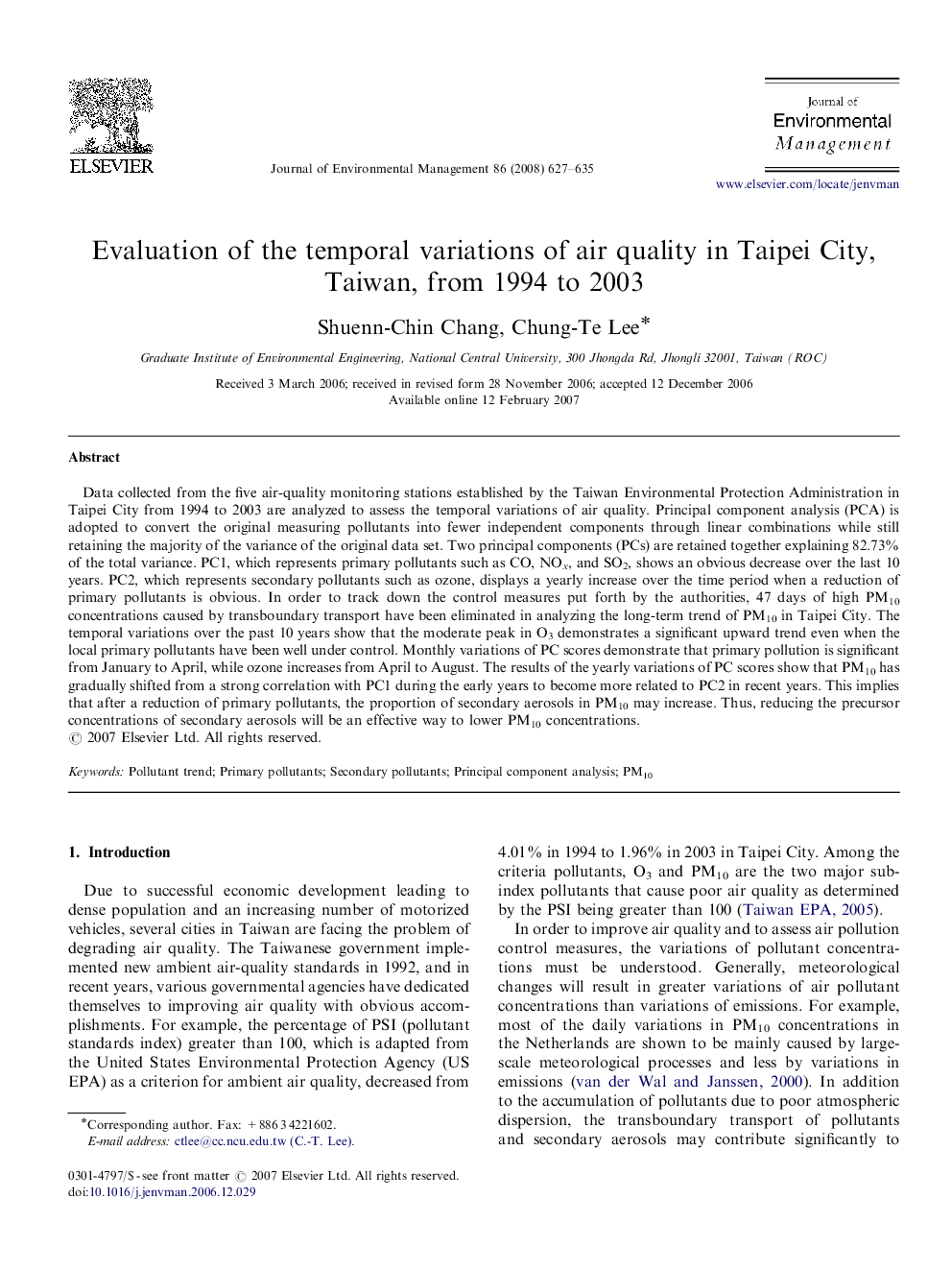| کد مقاله | کد نشریه | سال انتشار | مقاله انگلیسی | نسخه تمام متن |
|---|---|---|---|---|
| 1057854 | 947093 | 2008 | 9 صفحه PDF | دانلود رایگان |

Data collected from the five air-quality monitoring stations established by the Taiwan Environmental Protection Administration in Taipei City from 1994 to 2003 are analyzed to assess the temporal variations of air quality. Principal component analysis (PCA) is adopted to convert the original measuring pollutants into fewer independent components through linear combinations while still retaining the majority of the variance of the original data set. Two principal components (PCs) are retained together explaining 82.73% of the total variance. PC1, which represents primary pollutants such as CO, NOx, and SO2, shows an obvious decrease over the last 10 years. PC2, which represents secondary pollutants such as ozone, displays a yearly increase over the time period when a reduction of primary pollutants is obvious. In order to track down the control measures put forth by the authorities, 47 days of high PM10 concentrations caused by transboundary transport have been eliminated in analyzing the long-term trend of PM10 in Taipei City. The temporal variations over the past 10 years show that the moderate peak in O3 demonstrates a significant upward trend even when the local primary pollutants have been well under control. Monthly variations of PC scores demonstrate that primary pollution is significant from January to April, while ozone increases from April to August. The results of the yearly variations of PC scores show that PM10 has gradually shifted from a strong correlation with PC1 during the early years to become more related to PC2 in recent years. This implies that after a reduction of primary pollutants, the proportion of secondary aerosols in PM10 may increase. Thus, reducing the precursor concentrations of secondary aerosols will be an effective way to lower PM10 concentrations.
Journal: Journal of Environmental Management - Volume 86, Issue 4, March 2008, Pages 627–635